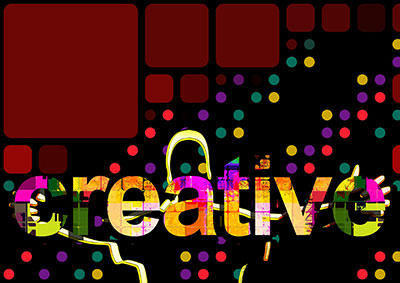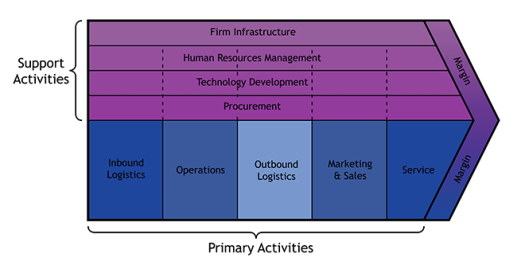 Despite a lot of public debate regarding being inclusive about creativity, particularly in the UK we continue to reinforce the deep-seated belief that creativity is something (only) talented and artistic individuals do. This individualistic conception of creativity extends to the framing of the creative industries and the creative economy, where creativity is treated as either almost a commodity or the preserve of the so-called ‘creative class’.
Despite a lot of public debate regarding being inclusive about creativity, particularly in the UK we continue to reinforce the deep-seated belief that creativity is something (only) talented and artistic individuals do. This individualistic conception of creativity extends to the framing of the creative industries and the creative economy, where creativity is treated as either almost a commodity or the preserve of the so-called ‘creative class’.
In the UK at least, the creative industries have become firmly recognised for their contribution to the economy. Statistics on creative industries output and productivity are regularly published to indicate their primary significance to the national economy.
Meanwhile, the discussion of creativity itself arises less frequently, perhaps because it is confusing or too ephemeral to warrant a meaningful discussion. Tellingly, government cultural policy is now set on a definition of the creative sector which avoids using the word ‘creativity’, preferring ‘expressive value’ instead (Work Foundation, 2007). Value, in the context of culture and creativity can be understood on a variety of levels – economic, aesthetic, socio-cultural, artistic and political. Although not mutually exclusive, these levels are often in tension with each other.
By taking the focus away from individual creativity and moving to a discussion of collective or social creativity we can try to understand how interaction across boundaries in jobs and projects (including those of the wider creative industries) enables, motivates and constrains the reproduction or transformation of social values, and the realisation of people’s creative potential. Creativity can be understood both as the generation of new ideas and as the idea-transforming component of innovation.
There are two strands of thought on this. One is interest at government level in the overall process of how ideas are generated and then turned into commercially viable products and services, which is the underlying rationale behind the DCMS’s Creative Economy Programme set up in 2005, for example. This is because at government level we are very interested in the very real economic potential of the creative economy, rather than in some form of cultural externality that sees an increase in the number of musicians, artists, film-makers and so on. In other words, there is an implicit interest in creativity within a particular context – that of market exchange.
The second characteristic is individual talent or vision which is expressed through creative individuals and less but in addition collective creativity. The traditional roots of the study of creativity have focused overwhelmingly on the individual as the main, and often only, contributor to creativity. This is despite the fact that the analysis of creative people and creative objects has demonstrated that most scientific and artistic innovations emerge from joint thinking, passionate conversations, and shared struggles amongst different people, emphasising the importance of the social dimension of creativity.
Collective creativity calls us to rethink the relationship between creativity and the economy through refocusing attention on the collective and relational nature of creative practice, where divergent thinking, transdisciplinary , co-ownership, heterogeneous knowledge production, boundary-spanning, technology-brokering, collaboration, dialogue and reflexivity are all important features. In keeping with the conceptualisation of creativity as a boundary phenomenon, collective creativity involves the study of our relational consciousness towards others and with ‘the other’.
We need then not to think of creativity as an individual act or that we can reduce what is produced down to a single idea. There is a need to move from an individualistic conception of creativity to one that is inherently inclusive and social in nature, while at the same time not denying that there are creative individuals and creativity does reside within us individually.
The film industry is an excellent example of both individual and social or collective creativity. In filmmaking creativity involves a large number of people working together from different disciplines effectively to solve a large number of complex problems. A film will contain thousands of ideas and this is not a solo effort from the producer or directors – literally hundreds of people may be involved. Creativity must be present at every level. Although the project leaders will be responsible for sifting through these to come up with a coherent whole, this is not necessarily done in isolation but can also be part of the team effort.
Film is a creative business and consumers, film goers, want to see something new and this newness goes hand in hand with taking risk. We cannot accurately predict whether or not it will be successful. If risk is minimised then this could result in predictability and this may go some way to explain why the themes of films are becoming more similar. It may also explain why some films are simply not very good.
With risk and uncertainty we need to build in the capability of recovery after failure and the key to this is having talented creative people. You also need to get these talented creative people to work well together. This takes trust and respect and requires us creating a culture and community that will support the development of a caring respectful relationship. If that works then creative people are loyal to one another and to their work. Creative power in a film rests within the creative leadership. Giving both leaders and creatives leeway and support and by providing an environment within which honest feedback can be given will enhance collective creativity.
Despite the need for collective creativity, this does not mean we should renounce our fascination with talented, skilled and creative people. Nor should we be denying the importance of the creative and cultural industries collectively. The creative industries are (and will remain) an extremely important sector of the economy. Indeed, it could be argued that film-makers, and other cultural workers have a particularly important role to play in the creative economy, but this is not because they alone are creative. Rather it is because a significant part of their work involves imagining other (better) worlds, other (better) products and services, and even being other (better)people. It could also be that creatives are already more in touch with the potential of social creativity to bring about reconciliation than others. This is because creation itself requires that creatives give of themselves freely to others. The primary commerce of creativity, after all, is a gift exchange and unless we as the audience realise this gift then there is no art in film.


Rate and Review
Rate this article
Review this article
Log into OpenLearn to leave reviews and join in the conversation.
Article reviews